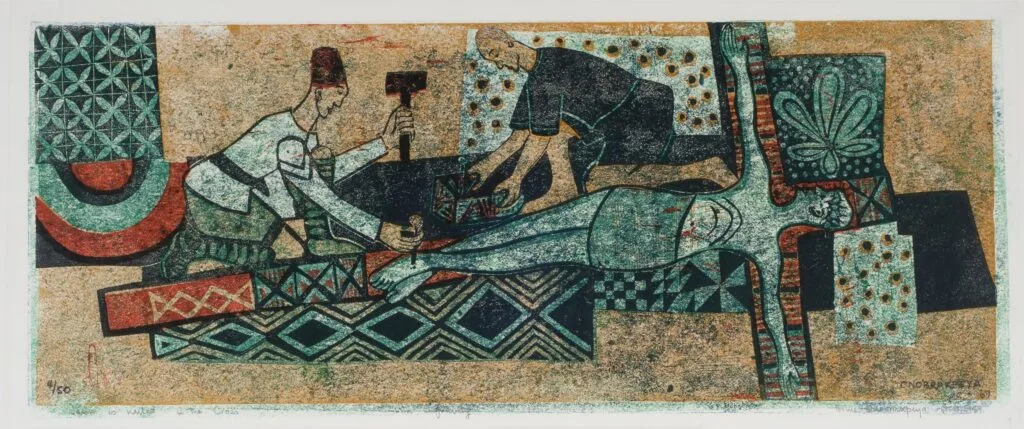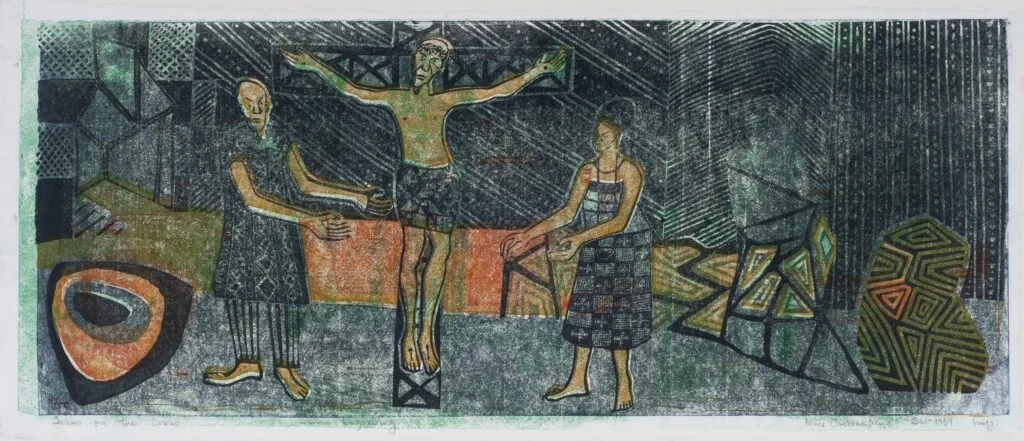Bruce Onobrakpeya is a celebrated Nigerian sculptor and printmaker who has been a key figure in the development of the Nigerian art scene. He is a founding member of the Zaria Art Society, a student group which sought to develop a new aesthetic expression that was firmly grounded in African traditions and philosophical principles. Through his experimentation and exploration of various artistic media, Onobrakpeya was instrumental in molding the visual aesthetic of early postcolonial Nigerian art, highlighting the country’s abundant history, culture, and philosophy, its environment, and documenting its socio-political evolution through various of art forms, including paintings, sculptures, prints, and installations.

Onobrakpeya’s artistic achievements have been widely recognized through numerous awards, and his artworks have been showcased at various esteemed institutions, including the 1990 Venice Biennale, the Tate Modern in London, the National Museum of African Art of the Smithsonian Institution in Washington, D.C., The Malmö Konsthall in Malmö, Sweden, and The National Gallery of Modern Art, Lagos, among others. In 2006, he was bestowed with the prestigious UNESCO Living Human Treasures Award. Now, in a landmark event, Bruce Onobrakpeya’s work is set to be showcased in his first solo exhibition at the High Museum of Art in America.

The exhibition, titled “The Mask and the Cross,” explores the artist’s creative phase from 1967 through 1978. During this time, Onobrakpeya produced a series of works that merged Nigerian tradition, folklore, and cosmology with Catholic motifs and stories from the Bible. The beginning of this era was marked by the development of a collection commissioned by the Catholic Church titled “Fourteen Stations of the Cross,” which portrays events from the final day of Jesus Christ on Earth. Onobrakpeya’s innovative approach to this commission involved depicting Biblical characters as Nigerian and reimagining Biblical scenes in Nigerian settings.

In this exhibition, the concept of “double belonging” in religion will be explored as a means of exerting agency, subversion, and cultural resilience. The exhibition is based on the High Museum’s version of Bruce Onobrakpeya’s Fourteen Stations of the Cross prints and will showcase other works from this period, as well as examples from later periods. The exhibition explores in depth recurring themes of religious hybridity and multiplicity that are present throughout the artist’s sixty-year career.


